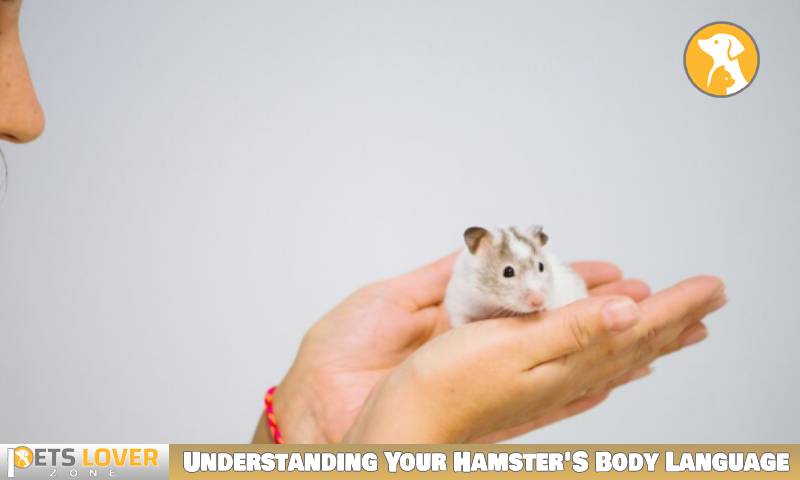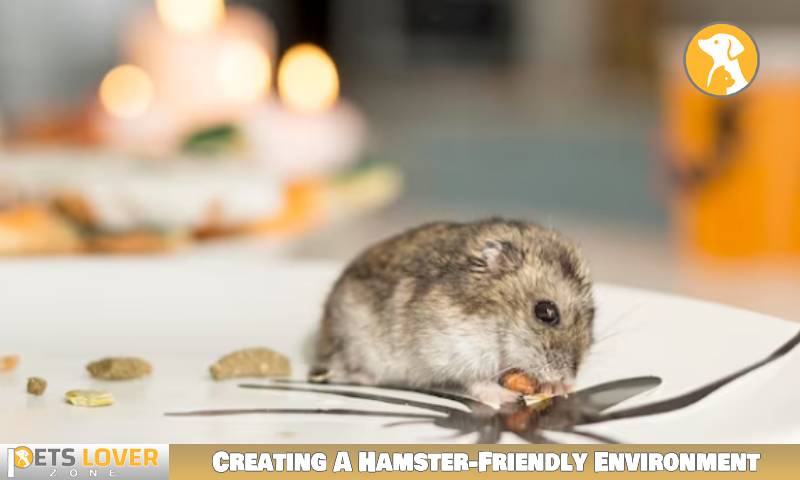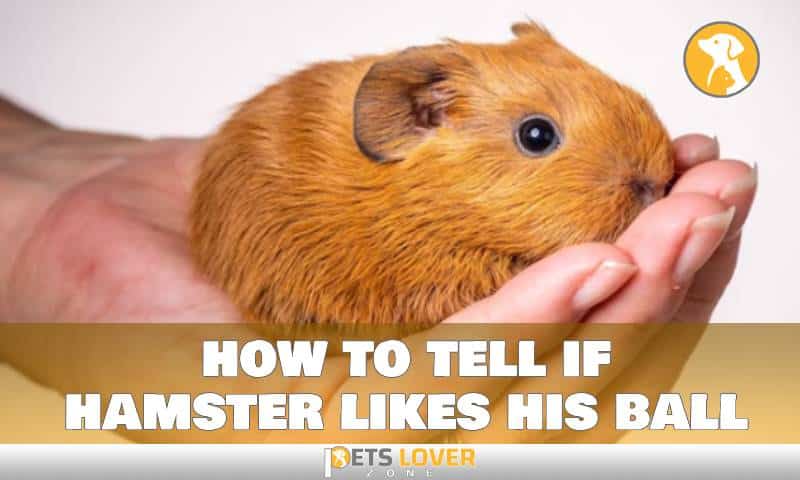To determine if a hamster likes his ball, observe for signs of enthusiasm and enjoyment during playtime, such as increased activity and exploration in the ball. A hamster’s behavior in the ball can indicate if they find it enjoyable and engaging.
Hamsters are known for their love of running and exploring, which makes providing them with a hamster ball an exciting addition to their environment. However, it’s important to ensure that your hamster enjoys using the ball. By paying attention to their behavior while in the ball, you can determine whether they find it entertaining or not.
In this article, we will discuss the signs that indicate whether or not your hamster likes his ball, allowing you to provide him with the most suitable toys and activities for his enjoyment and overall well-being.
Signs Your Hamster Is Enjoying Its Ball
When it comes to our furry little companions, it’s always important to gauge their happiness and well-being. One way to ensure that your hamster is content and entertained is by providing them with an exercise ball. Not only does this allow them to explore their surroundings, but it also provides mental stimulation.
If you’re unsure whether your hamster enjoys using the ball, here are some signs to look out for:
Increased Activity And Curiosity
- Your hamster’s activity level is noticeably higher when they’re in the ball.
- They are more curious about their surroundings and actively explore every nook and cranny.
- You may notice them climbing, rolling, or even trying to chew on the ball.
Running And Exploring Without Hesitation
- Your hamster hops into the ball willingly, without any hesitation or reluctance.
- They move around the room confidently, without fear or signs of stress.
- Your furry friend is excited and eager to get rolling, showing no signs of wanting to exit the ball prematurely.
Engaging With The Ball Regularly
- Your hamster spends a considerable amount of time in the ball, not just a few minutes, and then loses interest.
- They return to the ball for playtime repeatedly, indicating their enjoyment of the activity.
- You may observe them pushing the ball around actively, showcasing their enthusiasm.
Remember, each hamster is unique, and their preferences may vary. It’s crucial to closely monitor your pet’s behavior and assess their comfort level while using the exercise ball. Always ensure a safe environment for your hamster to explore and play in, allowing them to enjoy their ball to the fullest.
Understanding Your Hamster’S Body Language

Hamsters are curious and expressive creatures, and their body language can provide valuable insights into their emotions and preferences. By paying attention to their ears, eyes, and tail, as well as looking for signs of excitement or relaxation, you can better understand if your hamster likes his ball.
Let’s delve into these key indicators:
Pay Attention To Their Ears, Eyes, And Tail
- Ears: When a hamster is comfortable and content, his ears will be relaxed and facing forward. However, if he feels threatened or anxious, his ears may flatten against his head.
- Eyes: Bright, alert eyes indicate a hamster’s interest and engagement. On the other hand, squinting or half-closed eyes may signify stress or unease.
- Tail: A relaxed, curved tail is a positive sign that your hamster is enjoying his ball. But if the tail is tucked between the legs or vibrates rapidly, it could indicate fear or discomfort.
Look For Signs Of Excitement Or Relaxation
- Energetic movements: If your hamster runs around in his ball with enthusiasm, it’s a clear sign that he enjoys the experience and finds it exciting.
- Playful behavior: Some hamsters might push their ball with their paws or even do somersaults inside, displaying their joy and comfort.
- Calm demeanor: A hamster that remains still inside the ball and appears relaxed suggests that he is content and at ease with the environment.
Observe If They Eagerly Enter The Ball
- Willingness to explore: If your hamster eagerly enters the ball without hesitation or reluctance, it indicates his interest in the activity and his overall enjoyment.
- Quick entry and exit: Hamsters who quickly enter and exit the ball repeatedly are likely to be enjoying the freedom and movement it provides.
Remember, every hamster is unique, and their preferences may vary. It’s essential to carefully observe and understand your individual hamster’s behavior and body language to gauge their level of enjoyment of using a hamster ball.
Bonding Through Ball Play
Hamsters are curious creatures that love to explore and play. As a hamster owner, you can use playtime and toys like a hamster ball to strengthen the bond between you and your furry friend. Not only does ball play provide physical exercise for your hamster, but it also promotes mental stimulation and builds trust.
By understanding your hamster’s preferences and creating a safe and enjoyable playtime routine, you can enhance the bond with your hamster and have a blast together. Here are some key points to keep in mind:
Strengthening The Bond Between You And Your Hamster
- Spend dedicated playtime with your hamster every day to establish trust and familiarity.
- Use gentle and positive reinforcement to encourage your hamster’s interaction with the ball.
- Avoid forcing your hamster into the ball if they show signs of discomfort or distress.
- Be patient and allow your hamster to familiarize themselves with the ball at their own pace.
- Use treats or their favorite food as rewards during playtime to create positive associations.
Creating A Safe And Enjoyable Playtime Routine
- Make sure the ball is of suitable size for your hamster to prevent accidents or injury.
- Remove any hazards from the play area, such as wires or small objects that your hamster could chew on.
- Provide a clean and comfortable environment for your hamster to explore outside the ball, such as a playpen or specific area.
- Set a time limit for each play session to prevent your hamster from becoming overexerted.
- Observe your hamster closely during playtime and intervene if any signs of discomfort or distress arise.
Recognizing Their Preference For Specific Toys
- Pay attention to your hamster’s interaction with different toys and observe which ones they show more interest in.
- Provide a variety of toys, including chew toys, tunnels, and other interactive items, alongside the hamster ball.
- Rotate the toys regularly to keep playtime exciting and prevent boredom.
- Experiment with different textures, shapes, and sizes of toys to cater to your hamster’s individual preferences.
- Customizing your hamster’s playtime with their favorite toys can make the bonding experience even more enjoyable.
Remember, every hamster is unique, and what works for one may not work for another. Be observant, and patient, and always prioritize your hamster’s comfort and well-being during playtime. By engaging in ball play and providing a stimulating environment, you can create a stronger bond with your hamster while enjoying their delightful company.
The Importance Of Proper Ball Fit
Having a hamster is a delightful experience, and watching them play and explore their surroundings is always a joy. One of the most popular toys for a hamster is a hamster ball. A hamster ball allows your furry friend to roam around your home while being contained in a safe and secure environment.
However, it’s important to choose a ball that fits your hamster properly to ensure their comfort and safety during play. In this section, we will discuss the importance of a proper ball fit for your hamster and how to avoid potential injuries or discomfort.
Choosing An Appropriate-Sized Ball For Your Hamster:
- The size of the ball is crucial in determining the comfort and safety of your hamster.
- A ball that is too small may restrict your hamster’s movement and cause discomfort.
- Conversely, a ball that is too big will make it difficult for your hamster to navigate and may lead to accidents.
- Always refer to the manufacturer’s recommendations or consult with a pet store professional to choose the right size ball for your hamster.
- Consider your hamster’s size and breed when selecting a ball.
Ensuring Comfort And Safety During Play:
- Once you have chosen the right-sized ball, it’s important to ensure your hamster’s comfort and safety during play.
- Allow your hamster to acclimate to the ball by introducing it gradually and observing their reaction.
- Monitor your hamster while they’re in the ball to ensure they don’t show signs of distress or discomfort.
- Avoid leaving your hamster unattended in the ball for extended periods.
- Provide a safe environment for your hamster’s ball play by removing any potential hazards.
Avoiding Potential Injuries Or Discomfort:
- Regularly inspect the ball for any damage or wear and tear.
- If any cracks or openings are present, replace the ball immediately.
- Ensure that the ball’s entry points are secure and won’t accidentally open during play.
- Avoid placing the ball on high surfaces or near stairs to prevent falls.
- Limit the playtime in the ball to avoid exhaustion or stress on your hamster.
By choosing an appropriate-sized ball, ensuring your hamster’s comfort and safety, and avoiding potential injuries or discomfort, you can provide your furry friend with an enjoyable and enriching playtime experience. Remember, always prioritize your hamster’s well-being and monitor their behavior while playing with a hamster ball.
Differentiating Between Play And Distress
Hamster balls are a popular accessory for hamster owners, as they provide entertainment and exercise for these adorable little creatures. But as a responsible pet owner, it’s crucial to understand how your hamster feels about its ball. Are they genuinely enjoying their time or are they distressed?
In this section of the blog post, we will explore the differentiating signs between play and distress in hamsters. Understanding these cues will allow you to gauge your furry friend’s comfort level and ensure their well-being while they roll around in their ball.
Recognizing Signs Of Distress Or Anxiety:
- Watch out for excessive scratching or biting at the ball.
- Observe if your hamster is trying to escape the ball by repeatedly crashing into objects or walls.
- Pay attention to any rapid or irregular movements inside the ball.
- Look for signs of panic, such as increased heart rate or breathing.
- Notice if your hamster becomes motionless or hides within the ball.
Knowing When To Remove The Hamster From The Ball:
- If your hamster exhibits any signs of distress mentioned above, it’s crucial to remove them from the ball immediately.
- Monitor your hamster’s behavior during each play session.
- If playtime extends for an extended period, consider giving your hamster a break.
- Take note of any changes in your hamster’s mood or behavior over time.
- Be mindful of any limitations or discomfort that may arise due to the ball’s size or design.
Providing Alternative Sources Of Entertainment:
- Offer other toys and activities for your hamster to divert their attention from the ball.
- Introduce puzzle toys or treat dispensers to keep them mentally stimulated.
- Create a safe and enriching play area outside of the ball where your hamster can explore and interact with different objects.
- Consider supervised playtime outside of the ball to allow your hamster to roam freely.
By being attentive to your hamster’s behavior and understanding the signs of distress or anxiety, you can ensure a positive play experience for your furry companion. Remember, their well-being and happiness should always be the top priority.
Enriching Playtime With Interactive Toys
Playing with a hamster can be a delightful experience, and one of the best ways to keep them engaged is by incorporating interactive toys into their playtime.
Here are some key points to consider when introducing interactive toys to enhance ball play:
- Variety is key: Invest in a range of interactive toys to keep your hamster’s interest piqued. From tunnels and mazes to puzzle toys, there are endless options available on the market.
- Size matters: Ensure that the toys you choose are the right size for your hamster. It’s essential to pick toys that are easy for them to maneuver and play with.
- Safety first: Always prioritize the safety of your hamster. Opt for toys made from non-toxic materials and regularly inspect them for any signs of wear and tear.
- Rotating toys: To avoid boredom, rotate the toys, rotate the toys every few days. This way, your hamster will have something new to discover and explore each time.
- Bonding through play: Interactive toys not only entertain your hamster but also provide an opportunity for bonding. Get involved in the playtime, interact with your pet, and create a strong bond of trust and companionship.
- Supervision is key: While interactive toys are great for independent play, it’s essential to supervise your hamster during their playtime, especially when they are using moving toys like the hamster ball.
Offering Mental Stimulation And Physical Exercise
Interactive toys not only provide fun but also offer numerous benefits to your hamster’s overall well-being. Here are the benefits of incorporating interactive toys during playtime:
- Mental stimulation: Interactive toys engage your hamster’s mind, helping to prevent boredom and promote mental agility. These toys often include puzzles and challenges that require problem-solving skills, keeping your hamster’s brain active and sharp.
- Physical exercise: Hamsters are naturally active creatures, and interactive toys can help them get the exercise they need. Ball play, in particular, provides a great opportunity for your hamster to burn off energy and improve their physical fitness.
- Healthy weight management: Regular exercise through interactive toys can help your hamster maintain a healthy weight, reducing the risk of obesity and associated health problems.
- Stress reduction: Hamsters, like humans, can experience stress. Interactive toys act as stress relievers, diverting their attention from any possible stressors and providing a positive outlet for their energy.
- Preventing behavior problems: Interactive toys help prevent behavior problems by keeping your hamster engaged and entertained. Boredom can lead to destructive behaviors, such as excessive chewing or digging, which can be avoided with the right toys.
Incorporating interactive toys during ball play not only enhances your hamster’s overall playtime experience but also provides important physical and mental benefits. So go ahead, choose a variety of toys, ensure their safety, and watch your furry friend enjoy endless hours of interactive fun!
Creating A Hamster-Friendly Environment

Designing A Safe And Suitable Habitat For Your Hamster
Hamsters are active and curious animals that thrive in a well-designed environment. Creating a hamster-friendly habitat is essential to ensuring their comfort and overall well-being. Here are some key points to consider when designing a safe and suitable habitat for your furry friend:
- Provide a spacious cage: Hamsters love to explore and need ample space to move around. Choose a cage that is large enough to accommodate your hamster’s exercise needs. Aim for a minimum cage size of 24 inches by 12 inches, but bigger is always better.
- Choose appropriate bedding: Opt for bedding material that is safe and comfortable for your hamster. Avoid cedar or pine shavings, as aromatic oils can be harmful to their respiratory systems. Instead, go for paper-based or aspen bedding.
- Ensure proper ventilation: Good airflow is crucial to maintaining a healthy environment for your hamster. Place the cage in a well-ventilated area, away from direct sunlight and drafts. Regularly clean the cage to prevent ammonia buildup and promote fresh air circulation.
- Create hiding spots: Hamsters are natural burrowers and enjoy having cozy hiding spots in their habitat. Provide them with tunnels, small houses, or even empty toilet paper rolls for them to retreat to when they want privacy or feel anxious.
- Scatter food and water stations: Instead of placing all the food and water in one spot, scatter them around the cage. This mimics their natural foraging behavior, keeping them mentally stimulated and preventing boredom.
- Remove hazards: Ensure the habitat is free from any potential hazards that could harm your hamster. Check for sharp edges, small gaps they can get stuck in, or poisonous plants nearby. Regularly inspect toys and accessories for wear and tear, replacing them if needed.
Creating a hamster-friendly environment is key to ensuring their happiness and well-being. By following these guidelines, you can provide your hamster with a safe and comfortable home that promotes their instincts and keeps them happy and healthy.
FAQs
How Do I Know If My Hamster Likes His Ball?
You can tell if your hamster likes his ball if he eagerly explores it without hesitation and is visibly excited.
What Are The Signs That A Hamster Enjoys Using The Ball?
A hamster that enjoys using the ball will exhibit signs such as running in it frequently, showing curiosity, and returning to it voluntarily.
Are There Any Indications That A Hamster Dislikes His Ball?
If a hamster dislikes his ball, he may show signs of fear or stress, refuse to enter the ball, or exhibit aggressive behavior towards it.
What Should I Do If My Hamster Doesn’t Like His Ball?
If your hamster doesn’t like his ball, try introducing it slowly and positively, providing treats, or considering alternative toys for engagement.
Conclusion
To sum up, understanding whether your hamster likes his ball can be determined by observing their behavior. Look for signs such as curiosity, exploration, and repeated interaction with the ball. It’s important to provide the right environment for your pet with a suitable-sized ball that allows them to move comfortably.
Remember, a hamster may take some time to adjust to a new toy, so be patient and give them time to get familiar with the ball. By paying attention to your hamster’s body language and reactions during playtime, you can gauge their level of interest and enjoyment.
In addition, maintaining a strong bond with your hamster and providing regular interaction outside of the ball will ensure their overall happiness and well-being. Always prioritize your hamster’s safety and monitor them closely during playtime. With these observations and considerations, you’ll establish a loving and enjoyable bond with your furry companion.





